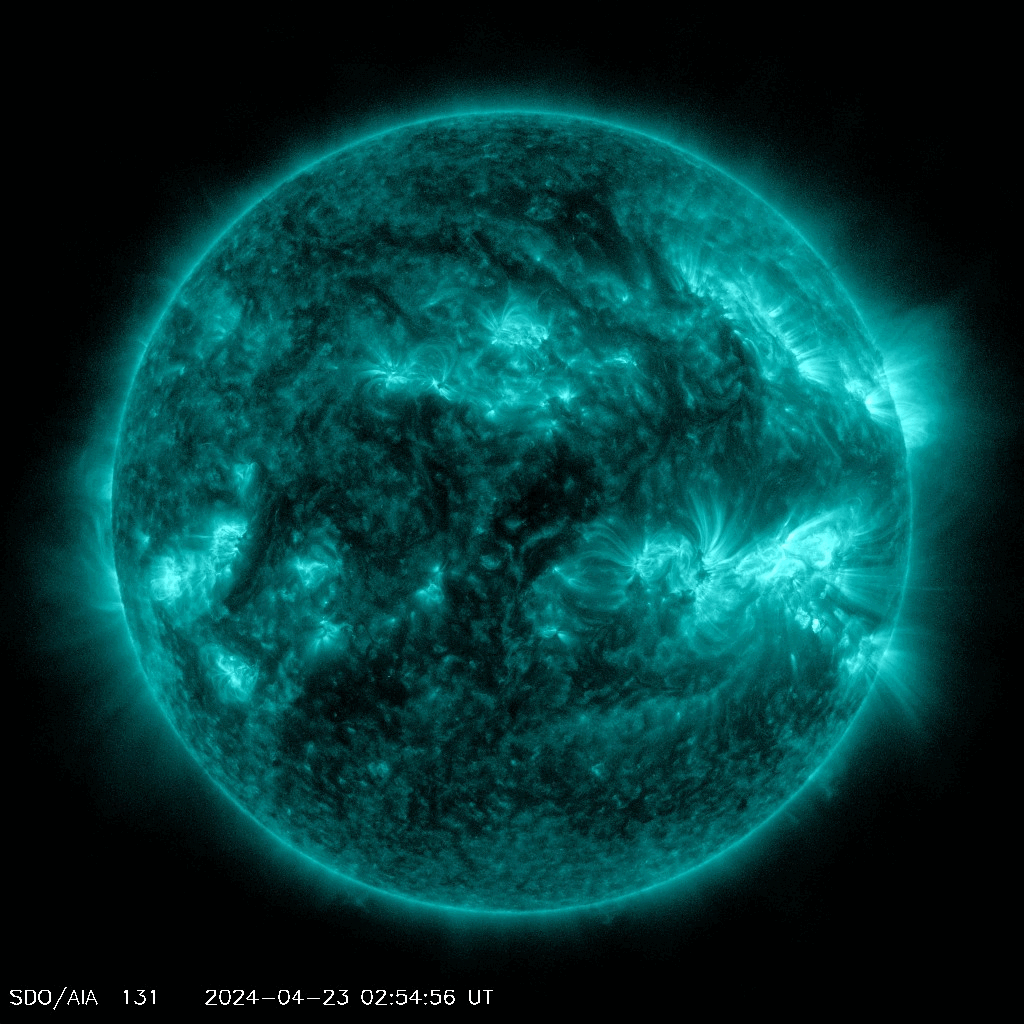Earlier this week, NASA’s Solar Dynamics Observatory (SDO) recorded a rarely seen event—four nearly-simultaneous flare eruptions involving three separate sunspots, as well as the magnetic filament between them. But as impressive as it is, the event could soon pose problems for some satellites and spacecraft orbiting Earth, as well as electronic systems here on the ground.
It may seem like a massive ball of fiery, thermonuclear chaos, but there’s actually a fairly predictable rhythm to the sun. Similar to Earth’s seasonal changes, the yellow dwarf star’s powerful electromagnetic fluctuations follow a roughly 11-year cycle of ebbs and flows. Although astronomers still aren’t quite sure why this happens, it’s certainly observable—and recent activity definitely indicates the sun is heading towards its next “solar maximum” later this year.
 Credit: NASA/SDO/AIA
Credit: NASA/SDO/AIA As Spaceweather.com notes, early Tuesday morning’s “complex quartet” of solar activity was what’s known as a “super-sympathetic flare,” in which multiple events occur at nearly the same time. This happens thanks to the often hard-to-detect magnetic loops spreading across the sun’s corona, which can create explosive chain reactions in the process. In this case, hundreds of thousands of miles separated the three individual flares, but they still erupted within minutes of each other. All-told, the super-sympathetic flare encompassed about a third of the sun’s total surface facing Earth.
[Related: Why our tumultuous sun was relatively quiet in the late 1600s]
And that “facing Earth” factor could present an issue. BGR explains “at least some” of the electromagnetic “debris” could be en route towards the planet in the form of a coronal mass ejection (CME). If so, those forces could result in colorful auroras around the Earth’s poles—as well as create potential tech woes for satellite arrays and orbiting spacecraft, not to mention blackouts across some radio and GPS systems. The effects, if there are any, are estimated to occur over the next day or so, but at least they’re predicted to only be temporary inconveniences.
Luckily, multi-flare situations like this week’s aren’t a regular occurrence—the last time something similar happened was back in 2010 in what became known as the Great Eruption.
[Related: Hold onto your satellites: The sun is about to get a lot stormier]
Still, these super-sympathetic flares serve as a solid reminder of just how much of our modern, electronically connected society is at the sun’s mercy. As recently as 2022, for example, a solar storm knocked around 40 Starlink satellites out of orbit. The risk of solar-induced problems will continue to rise as the skies grow increasingly crowded.
While many companies continue to construct redundancy programs and backup systems for these potential headaches, astronomers and physicists still can’t predict solar activity very accurately. More research and funding is needed to create early warning and forecasting programs.
This year alone has already seen at least two other solar activity events—and seeing as how we still haven’t passed the solar maximum, more impressive (and maybe damaging) activity is likely on the way.
















